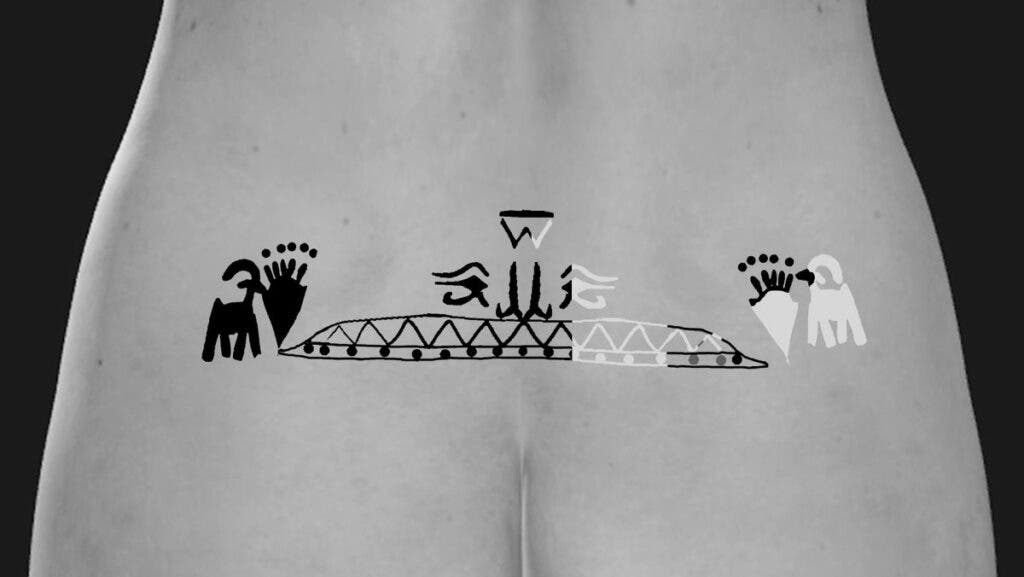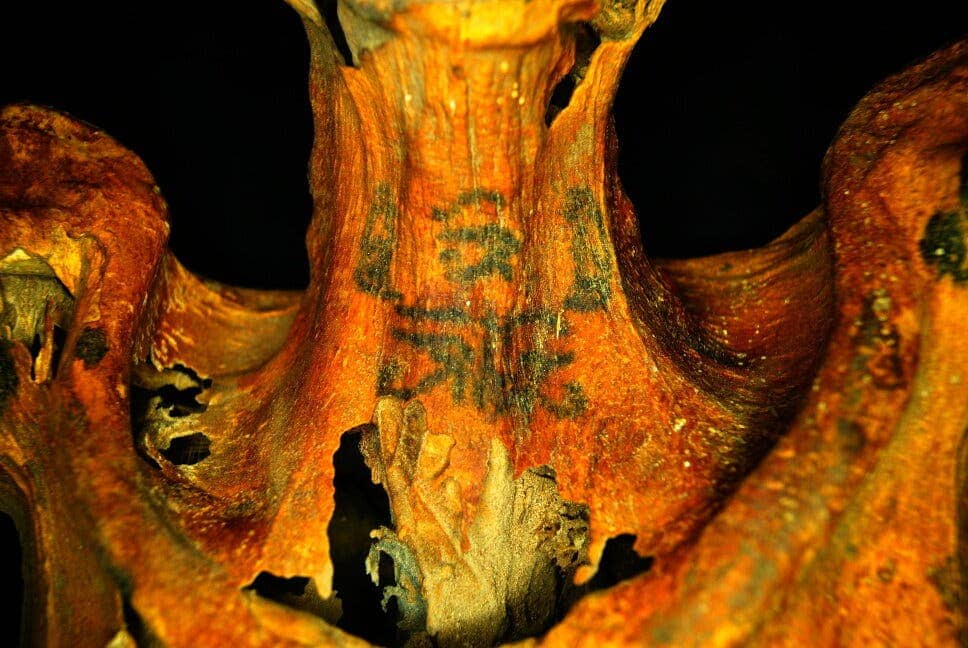Lower back tattoos may seem like an early 21st-century fad brought about by the emergence of low-cut jeans, but they date much further back than you’d think; in fact, new findings show that lower back tattoos date to over 3,000 years ago, although they may have been used for a very different purpose.

Humans and tattoos go back a long time. Ötzi the Iceman, who met his demise in the Austrian mountains 5,300 years ago was covered in tattoos. The Ancestral Pueblo people were also big on tattoos, and recent research found that in Ancient Egypt, tattoos may have been pretty common. The new study adds even more evidence to that idea.
Mummies and tattoos
The discovery of one of the two female mummies started in the 1920s when archaeologists discovered an ancient town called Deir el-Medina near the Nile River in Egypt. Deir el-Medina was an ancient Egyptian workmen’s village from 1550 to 1070 BC. It was home to artisans who worked on the tombs in the Valley of the Kings during the 18th to 20th Dynasties of the New Kingdom of Egypt and its ancient name was Set maat (“Place of Truth”). Consequently, the craftsmen who lived there were called “Servants in the Place of Truth”. Deir el-Medina provided many striking discoveries during the 1920s excavation, and to this day, the village is our best source of understanding of how women lived in the New Kingdom era in Egypt.
Over the years, researchers found that the town was neatly planned and many of the streets and homes where people lived are still in good shape. Among the discoveries were also two female mummies, along with a few figurines. The figurines are tattooed themselves, but what really drew the researchers’ eyes was a sign that the women themselves may have had tattoos.
Of the two mummies, one had been looted and its body unwrapped, while the other was still wrapped. When the skin of the first mummy was analyzed, researchers found evidence of a tattoo that features representations of a bowl, a purification ritual, and a depiction of Bes — the Egyptian god that protects households and mothers.
For the second mummy, researchers used infrared photography to avoid unwrapping it. It turns out this was a middle-aged woman that had another tattoo that featured an eye of Horus and also Bes. It also had a zigzag line that indicates a marsh, a place where people would go to relax and ease pain (as in childbirth). There was also a tattoo on the neck of the mummy.

Researchers interpret all of this as a sign that the tattoos were used as a ward asking the goods for help with pregnancy and postpartum — sort of like having your own amulet on yourself all the time. The fact that the tattoos were on the lower back is also significant.
“Acute lower back pain frequently accompanies labor, and, in some women’s cases, menstruation, as well,” the authors write.
The ritual nature of the tattoos is also indicated by the figurines that were discovered with the mummies.
“In some cases, the figurines and the women even share the same location of the tattoos on their body, suggesting that the combined location and tattoo motifs are integral to their function and/or meaning. Through linking tattooing on human remains with figurines, our work evaluates when we can interpret markings on figurines as tattooing while also exploring potential explanations for the tattoo motifs.”
But this interpretation isn’t completely convincing. If tattoos were a common way of asking the gods for help with childbirth, then you would expect them to be more common — but studies haven’t really found this many tattoos of this sort.
“If the tattoos were intended to ensure successful pregnancy and childbirth, or avoid pain for the woman who bears them, we would expect to find the presence of these markings far more frequently.”
The counterargument is that this could simply be an existing, but more uncommon practice. Besides, archaeologists haven’t really opened up all that many mummies or studied them beneath the wraps, so we don’t exactly know how common it was. Another interpretation is that these women were involved in a goddess cult or in the birth-giving process (like midwives), which would explain why these tattoos are relatively rare.
The tattoos themselves seem to be more intricate than other tattoos from the same period, which makes them even more interesting. Also, imagery related to pregnancy or childbirth is not that common in Egyptian art, which makes understanding the meaning of these tattoos particularly exciting.
Without more mummies bearing similar types of tattoos, however, it is hard to conclusively determine what they were truly for.
The study was published in The Journal of Egyptian Archaeology.









